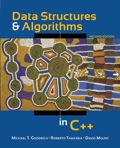
Explanation of Solution
Pseudo code:
//define a function reverse()
Procedure reverse()
//declare required variables
INT a[20],b[20],n.
//prompt the user to enter the number of elements
PRINT Enter the no: of elements:
//get the number of elements
GET n
//iterate a FOR loop
FOR i=0 to i<n
//prompt the use to enter the elements
PRINT Enter the elements
//get the values
GET a[i]
//iterate a FOR loop
FOR i=0 to i<n
//reverse the element
b[n-1-i]=a[i]
//iterate a FOR loop
FOR i=0 to i<n
//prompt the reversed elements
PRINT b[i]
Explanation:
The above pseudo code is used to create a function that takes an array of integers and reverse its order. In the procedure,
- Declare the procedure “reverse()”.
- Declare the variables and arrays.
- Print the user to enter the number of elements.
- Get the number of elements.
- Iterate a “for” loop up to “i<n”.
- Print to the user to enter the elements.
- Get the values to “a[i]”.
- Iterate a “for” loop up to “i<n”.
- Reverse the elements.
- Iterate a “for” loop up to “i<n”.
- Print the elements.
C++ function:
void reverse()
{
//declare the required variables
int a[20],b[20],n;
//prompt the user to enter the number of elements
cout<<"Enter the no: of elements:";
//scan for the value
cin>>n;
//iterate a for loop
for(int i=0;i<n;i++)
{
//prompt the user to enter the elements
cout<<"Enter the"<<i<<" element:";
//scan for the values
cin>>a[i];
}
//iterate a for loop
for(int i=0;i<n;i++)
{
//Reversing the elements
b[n-1-i]=a[i];
}
//iterate a for loop
for(int i=0;i<n;i++)
{
//Display of reversed elements
cout<<b[i]<<"\n";
}
}
Explanation:
The above program code is used to create a function that takes an array of integers and reverse its order. In the procedure,
- Declare the function “reverse()”.
- Declare the variables and arrays.
- Print the user to enter the number of elements.
- Get the number of elements.
- Iterate a “for” loop up to “i<n”.
- Print to the user to enter the elements.
- Get the values to “a[i]”...
Want to see the full answer?
Check out a sample textbook solution
Chapter 1 Solutions
Data structures and algorithms in C++
 Database System ConceptsComputer ScienceISBN:9780078022159Author:Abraham Silberschatz Professor, Henry F. Korth, S. SudarshanPublisher:McGraw-Hill Education
Database System ConceptsComputer ScienceISBN:9780078022159Author:Abraham Silberschatz Professor, Henry F. Korth, S. SudarshanPublisher:McGraw-Hill Education Starting Out with Python (4th Edition)Computer ScienceISBN:9780134444321Author:Tony GaddisPublisher:PEARSON
Starting Out with Python (4th Edition)Computer ScienceISBN:9780134444321Author:Tony GaddisPublisher:PEARSON Digital Fundamentals (11th Edition)Computer ScienceISBN:9780132737968Author:Thomas L. FloydPublisher:PEARSON
Digital Fundamentals (11th Edition)Computer ScienceISBN:9780132737968Author:Thomas L. FloydPublisher:PEARSON C How to Program (8th Edition)Computer ScienceISBN:9780133976892Author:Paul J. Deitel, Harvey DeitelPublisher:PEARSON
C How to Program (8th Edition)Computer ScienceISBN:9780133976892Author:Paul J. Deitel, Harvey DeitelPublisher:PEARSON Database Systems: Design, Implementation, & Manag...Computer ScienceISBN:9781337627900Author:Carlos Coronel, Steven MorrisPublisher:Cengage Learning
Database Systems: Design, Implementation, & Manag...Computer ScienceISBN:9781337627900Author:Carlos Coronel, Steven MorrisPublisher:Cengage Learning Programmable Logic ControllersComputer ScienceISBN:9780073373843Author:Frank D. PetruzellaPublisher:McGraw-Hill Education
Programmable Logic ControllersComputer ScienceISBN:9780073373843Author:Frank D. PetruzellaPublisher:McGraw-Hill Education





